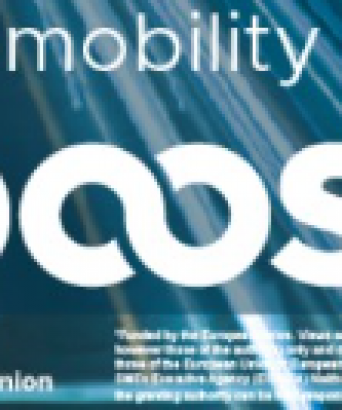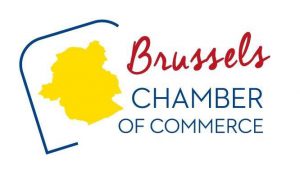The EU and Kenya announced end of last year the political conclusion of the negotiations for an Economic Partnership Agreement (EPA). The Agreement will boost trade in goods and create new economic opportunities, with targeted cooperation to enhance Kenya’s economic development. It is the most ambitious EU trade deal with a developing country when it comes to sustainability provisions such as climate and environmental protection and labour rights.
The EU is Kenya’s first export destination and second largest trading partner, totalling €3.3 billion of trade in 2022 – an increase of 27% compared to 2018. The EPA will create even more opportunities for Kenyan businesses and exporters, as it will at once fully open the EU market for Kenyan products, and it will incentivise EU investment to Kenya thanks to increased legal certainty and stability.
How big is EU-Kenya trade?
Kenya is the ninth largest economy of the African continent and is East Africa’s main economic hub. Kenya’s economy achieved broad-based growth, averaging 4.8% per year between 2015 and 2019, significantly reducing poverty, from 36.5% in 2005 to 27.2% in 2019. The economy experienced a reasonably strong recovery after the Covid-19 pandemic, although the country’s economy is currently affected by high inflation. GDP growth remained robust at 4.8% in 2022 (source: Kenya Overview: Development news, research, data | World Bank).
The EU is Kenya’s second largest trading partner, and it most important export market. Total trade between the EU and Kenya reached €3.3 billion in 2022, with an increase of 27% compared to 2018. Trade between the EU and Kenya is balanced, as opposed to Kenya’s trade with other major partners, with a slight surplus in the EU’s favour of €768 million.
The EU’s imports from Kenya amount to €1.2 billion and are mainly vegetables, fruits, and flowers. EU’s exports to Kenya amount to €2.02 billion and are mainly in mineral and chemical products and in machinery.
The EU is Kenya’s first export destination, with 16% of its total exports in 2022, followed by Uganda (12%) and USA (8%). Kenya is mainly importing from China (20%) and India (11%); the EU is ranked in third place, with 10% of total Kenyan imports.
Why has the EU negotiated an agreement with Kenya?
Kenya represents a major partner for the EU in Africa, in the current economic and political context, and this agreement will bring our relationship to the next level. The country is one of the most stable democracies in the continent, with a growing political role in the region and internationally.
Kenya is one of the key EU partners in Sub-Saharan Africa to pursue an agenda of shared values and interests, promote peace and security, prosperity, and democratic stability in the region, as well as multilateralism.
The Economic Partnership Agreement (EPA) between the EU and Kenya was explicitly integrated as a key deliverable of the EU-Kenya Strategic dialogue, launched in June 2021, and it is a crucial component of our Africa engagement strategy. It represents a significant development, considering Kenya’s economic and political importance in the East African region.
The EU-Kenya EPA will boost bilateral trade in goods and investment flows and contribute to sustainable economic growth. It will also be accompanied by trade-related development cooperation to support economic growth and job creation.
What will the agreement mean for trade in goods?
The main objective of the EPA is to liberalise trade between the EU and Kenya. As in other EPAs, the EU-Kenya EPA foresees an asymmetric removal of tariffs. In practical terms, this means that the EU fully liberalises access to its market immediately upon application of the EPA and all goods from Kenya (except arms) can enter the EU market without tariffs or quotas.
Kenya will open its market gradually to imports from the EU, benefitting from transitional periods. In addition, Kenya will be able to exclude sensitive products from liberalisation.
Finally, Kenya may also benefit from other provisions that consider its development needs such as special safeguards for agriculture, measures on food security and infant industry protection.
How does the deal support industrial development and diversification of trade?
Together with the bilateral economic cooperation and development cooperation mechanisms, the agreement contributes to good governance in Kenya. These provisions will enhance the business and investment environment and help generate new trading and investment opportunities. Businesses that are engaged in international trade are more productive, pay higher wages, contributing to the value added in the economy.
The EPAs are international agreements that do not expire. Thus, both the free access of Kenya into the EU market without any time limit, and the long-term free access of EU products to the Kenyan market increase incentives to invest in Kenya, as other EPAs do in other developing ACP countries, and to build capacity to meet EU standards.
Legal certainty, stability and predictability are among the main aspects potential investors are likely to consider when deciding on an investment.
To what extent does the EPA eliminate existing customs duties?
Kenya has committed to liberalise the equivalent of 82.6% of imports from the EU by value. Under Kenya’s current tariff regime, more than half of these imports are already imported duty free, not only from the EU but from the entire world. The remainder will be progressively liberalised within 15 years from the moment the EPA enters into application. 2.9% of it will be liberalised within 25 years.
Kenya decided to exclude from liberalisation various agricultural products, wines and spirits, chemicals, plastics, wood-based paper, textiles and clothing, footwear, ceramic products, glassware, articles of base metal and vehicles.
The liberalisation on Kenyan imports resulting from the EPA will therefore be entirely manageable and spread over a long period of time. There is no risk either of Kenyan market being “flooded” by EU products nor of any significant budget revenue shocks.
What will be the architecture of the agreement?
It was agreed that the rules of origin of the Market Access Regulation would apply on a temporary basis to both parties’ trade, while the original reciprocal rules of origin would be updated.
The Market Access Regulation provides duty-free and quota-free access to the EU market for products originating in African, Caribbean and Pacific countries which firstly, do not benefit from the EU’s Everything But Arms (EBA) scheme and secondly, have concluded, but not yet ratified, an EPA with the EU.
In practice, this means that the rules of origin currently applying to Kenyan exports to the EU will continue to apply for the moment. As a novelty, the Market Access Regulation rules will be applicable for future preferential EU exports to Kenya as well, in case reciprocal rules of origin are not negotiated and applied in the meantime.
It is envisaged that a new protocol on rules of origin will be negotiated as soon as possible, and at the latest within the first five years of the implementation of the EPA. The 2014 Protocol will be the basis for negotiation of the new set of rules, with limited adjustments particularly linked to the bilateral nature of the agreement.
What are the next steps?
The Council has adopted a decision for the signature of the EPA, which took place on 18 December in Nairobi. The European Parliament will have to give its consent for the conclusion of the EPA, after which the agreement will enter into force.
Source : DG Trade





